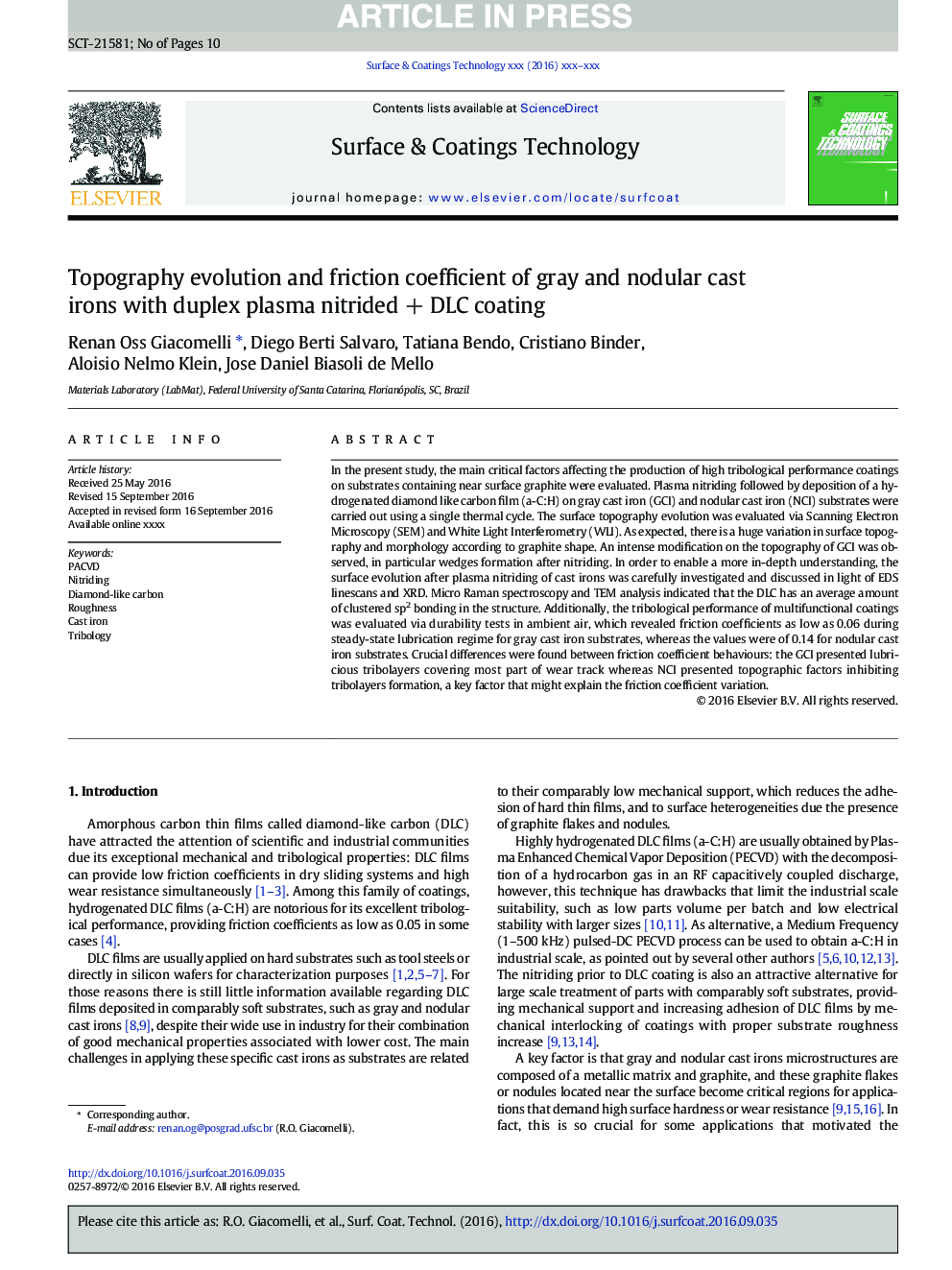| Article ID | Journal | Published Year | Pages | File Type |
|---|---|---|---|---|
| 5464751 | Surface and Coatings Technology | 2017 | 10 Pages |
Abstract
In the present study, the main critical factors affecting the production of high tribological performance coatings on substrates containing near surface graphite were evaluated. Plasma nitriding followed by deposition of a hydrogenated diamond like carbon film (a-C:H) on gray cast iron (GCI) and nodular cast iron (NCI) substrates were carried out using a single thermal cycle. The surface topography evolution was evaluated via Scanning Electron Microscopy (SEM) and White Light Interferometry (WLI). As expected, there is a huge variation in surface topography and morphology according to graphite shape. An intense modification on the topography of GCI was observed, in particular wedges formation after nitriding. In order to enable a more in-depth understanding, the surface evolution after plasma nitriding of cast irons was carefully investigated and discussed in light of EDS linescans and XRD. Micro Raman spectroscopy and TEM analysis indicated that the DLC has an average amount of clustered sp2 bonding in the structure. Additionally, the tribological performance of multifunctional coatings was evaluated via durability tests in ambient air, which revealed friction coefficients as low as 0.06 during steady-state lubrication regime for gray cast iron substrates, whereas the values were of 0.14 for nodular cast iron substrates. Crucial differences were found between friction coefficient behaviours: the GCI presented lubricious tribolayers covering most part of wear track whereas NCI presented topographic factors inhibiting tribolayers formation, a key factor that might explain the friction coefficient variation.
Related Topics
Physical Sciences and Engineering
Materials Science
Nanotechnology
Authors
Renan Oss Giacomelli, Diego Berti Salvaro, Tatiana Bendo, Cristiano Binder, Aloisio Nelmo Klein, Jose Daniel Biasoli de Mello,
